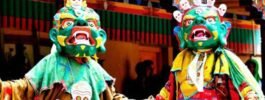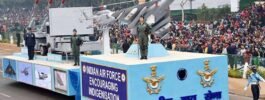Holi, the vibrant and colorful festival celebrated with great enthusiasm across India, is not just about smearing colors on one another. It is a festival that brings people together through the universal languages of music and dance. Music and dance play a significant role in Holi celebrations, adding to the festive spirit and creating an atmosphere of joy and camaraderie.
Traditional Songs and Melodies
One of the key elements of Holi celebrations is the singing of traditional songs and melodies known as ‘Holi songs’ or ‘Holi ke geet.’ These songs are often folk-based and have been passed down through generations. The lyrics of these songs are usually playful, filled with humor, and often revolve around the theme of love and togetherness. The melodious tunes and catchy rhythms of these songs add to the festive ambiance and create a sense of unity among the participants.
The Holi songs are not only sung during the celebrations but are also played in the lead-up to the festival, building anticipation and excitement. The joyous and uplifting nature of these songs sets the mood for the festivities and encourages people to come together and celebrate in harmony.
Lively Beats and Rhythms
Music is incomplete without dance, and Holi celebrations are no exception. The lively beats of traditional instruments like the dholak, tabla, and dhol add a dynamic element to the festivities. The rhythmic sounds of these instruments create an infectious energy that gets everyone moving and grooving to the music.
Dance forms an integral part of the Holi celebrations, with people of all ages coming together to perform traditional dances like the ‘dandiya raas,’ ‘bhangra,’ and ‘garba.’ These dances are not just a form of entertainment but also a way to express joy and happiness. The synchronized movements and foot-tapping beats of these dances create a sense of unity and harmony among the participants.
Energetic Dances like Dholak and Bhangra
The dholak, a traditional Indian drum, plays a central role in Holi celebrations. The rhythmic beats of the dholak reverberate through the air, creating a festive atmosphere that is hard to resist. People gather around the dholak player, clapping and dancing to the beats, adding to the overall excitement of the celebrations.
Another popular dance form that is synonymous with Holi is Bhangra. Originating from the state of Punjab, Bhangra is a high-energy dance that involves vigorous movements and lively music. The infectious beats of the dhol and the energetic dance steps of Bhangra dancers infuse a sense of dynamism and joy into the festivities.
Promoting Social Interaction and Unity
Music and dance have a unique ability to bring people together, transcending barriers of language, culture, and background. In the context of Holi celebrations, music and dance play a vital role in promoting social interaction and unity. People from all walks of life come together to sing, dance, and celebrate, fostering a sense of community and togetherness.
The shared experience of dancing to the same beats and singing the same songs creates a bond among the participants, breaking down barriers and fostering friendships. The spirit of camaraderie and unity that is generated through music and dance during Holi celebrations is what makes the festival truly special.
Reflecting the Joyous Spirit of the Festival
The role of music and dance in Holi celebrations goes beyond mere entertainment; it reflects the essence and spirit of the festival. The lively beats, colorful melodies, and energetic dances mirror the exuberance and joy that Holi embodies. The infectious energy of the music and dance acts as a catalyst for spreading happiness and positivity among the participants.
As people come together to sing, dance, and celebrate during Holi, they are not just engaging in recreational activities but also participating in a cultural tradition that has been passed down through generations. The music and dance of Holi serve as a reminder of the rich cultural heritage of India and the enduring spirit of unity and togetherness that the festival represents.







